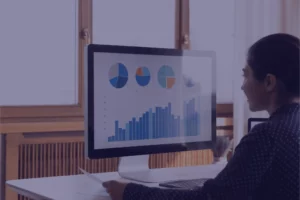What is an eCommerce Conversion Funnel? (And How to Optimise Yours)

Ensuring that you attract, engage and convert enough customers is central to the success of your ecommerce business or brand.
But how do create the framework to make that a reality? The answer is in having a good grasp of the makeup of your ecommerce conversion funnel.
Here we answer some key questions around the topic including:
- What is an ecommerce conversion funnel?
- What are the specific stages in it?
- How do you build an ecommerce conversion funnel?
- How do you measure the effectiveness of your marketing at each stage?
- How to optimise your funnel with Corvidae
What is an ecommerce conversion funnel?
An ecommerce conversion funnel is a diagrammatic recreation of the customer journey and various interactions that an individual has with your ecommerce brand. From when they first become aware of you right through to purchase and beyond.
Essentially it maps out the progression from prospect to becoming a customer of your brand. It is highly unlikely that a prospect like this is going to go from first touchpoint direct to sale. So, the funnel provides a mechanism for conceptualizing the journey in a way that enables you to specifically target these prospects. With the right type of guidance, communication and incentives at each stage – to drive them down through the funnel as quickly as possible.
What are the stages of a conversion funnel?
The reality is that the conversion funnel is going to differ depending on the type of products and services you sell. And how prospective buyers interact with you to find, assess and purchase them.
The typical length of the funnel can also be impacted by key variables like the price and complexity of your product. That can have a strong bearing on how quickly you can bring prospects to conversion.
However, some core, common stages that typically make up an ecommerce conversion funnel are as follows:
Awareness
This is often referred to as ‘top of funnel’, and at this stage, prospects are in exploratory mode.
They might not even have a clear sense of their goals, and they are likely to be searching for answers to key questions about their needs or perhaps a problem they are looking to solve. It is a great time to educate them, not only on your brand but on how they can potentially solve their specific problem or need. At a point where they are relatively open in their decision–making process.
Marketing channels like SEO, Social and Display advertising can play a key role in shaping strong awareness for brands at this point in the funnel. And ensuring you meet them early on their buying journey. And just as important, at this stage, is your ability to isolate which channels and campaigns are working for your brand through effective attribution.
Consideration
At the consideration phase, they are aware of your brand and they are likely to be evaluating what you have to offer. Potentially alongside a list of similar products or services.
At this ‘mid-funnel’ stage, ecommerce brands need to be thinking about optimising the customer journey on both website and mobile apps – in a way that encourages engagement and conversion. “How to” content that enables them to navigate the decision-making process – and which also positions your brand as the best solution for them – is pivotal and can take a wide range of formats. From buying guides to competitive comparisons often in the shape of video, blogs and infographics.
Conversion
The conversion phase is the ‘bottom of the funnel’ and, in a lot of ways, is the moment of truth for many brands.
At this stage, you have managed to convince the prospect to consider your brand and also provided enough context in the consideration phase to get them on the verge of buying your product. The focus, from a marketing perspective, here is on tipping the balance. Especially with potential buyers who are perhaps hesitating in this final phase of the funnel.
And that could be for different reasons. For example, with a price-conscious buyer who has had your product in a shopping cart 3 times without purchasing, a targeted email with a time-limited 20% discount might be all that is needed. But it is also entirely possible that, despite your best efforts, some questions remain in the buyers’ minds. And you want to ensure that they can be quickly addressed via a chat function on your site, for example.
What you decide to deploy to impact conversion is going to be heavily tailored to the type of ‘last stage’ concerns your prospects have.
Retention
Often overlooked but becoming increasingly important in a world where what peers and other customers say and think about your brand can drive significant levels of revenue.
Savvy e-commerce marketers realise the crucial importance of influencing customers at this stage of the funnel. And encouraging them in revenue generation activities like repurchasing, leaving customer reviews (that influence other prospective customers) and taking part in ‘refer-a-friend’ type promotions where the barrier to sale is significantly reduced.
How to build an ecommerce conversion funnel
So how do you go about building your own funnel?
- Map out your customer journey end-to-end
The reality for ecommerce marketers is that they are increasingly dealing with complex multi-device and multi-channel user journeys. Journeys that also take place both on and offline, involve a wide range of media from early-stage influences like TV/Connected TV advertising, OOH and digital display. Right down to retargeting-type activity at the bottom end of the funnel.
So, buying journeys that begin their life in the awareness stage on tablets and mobile phones – with informational web searches and educational browsing – often then graduate to more detailed analysis on desktops and laptops before any purchase is made. The key for ecommerce marketers is to map out these journeys and have a clear idea of their extent.

The data in your marketing analytics solutions offers the potential to help map out these journeys. But ecommerce marketers are increasingly becoming frustrated with the challenge of piecing together an accurate picture across silos like SEO, Paid Social, Paid Advertising and programmatic activity.
The challenge here is that many existing analytics solutions like GA and Adobe only give partial views of what are long and complex customer journeys.
- Be really clear about what you want people to do at each funnel stage
Create an ecommerce plan for targeting prospects at each stage.
Use the funnel mapping above – of awareness, consideration, conversion and retention – and ensure that you have a clear idea of your strategy for each stage. For example, in the awareness stage, there is a big focus on filling the top end of the funnel with potential prospects and you should explore a wide range of ecommerce strategies and channels to do this. This is where well-thought-out tactics in terms of SEO and higher funnel work on social channels like Facebook and Instagram can pay huge dividends as you begin to capture and influence prospects.
And, as prospects drop further down the funnel into stages like consideration, conversion and retention the quality of the content you push to them – to address their concerns, questions and needs – is going to be critical. Along with other media channels like display ads and retargeting that can really tip the balance for you with ‘waverers’.
- Make it easy to follow and even easier to buy
Frictionless ecommerce is your ideal scenario, so remove as many barriers to conversion as you can.
Make your website and apps easy to access, understand and navigate – and dig into your checkout processes to ensure that prospects aren’t leaking out of the bucket at this final stage of the journey. Leverage the potential in web user tracking tools like Hotjar and Crazyegg to take the guesswork out of things and make data (and heatmap) driven decisions. That are built on rigorous analysis and effective A/B testing of the intricacies of each and every step on the way.
How do you measure the stages in your funnel?
All of the hard work in building the funnel will come to nothing if you can’t effectively measure the impact of it.
Here are 4 key tips for getting your strategy around measurement right too:
- Get the tools to assess the impact of each and every touchpoint
This means ensuring you have an attribution solution in place that enables you to assess the impact of the wide variety of channels and campaigns you are using. On and offline – and across a range of devices from tablet to mobile and laptop to desktop.

The key here is to get access to the type of view that minimizes the impact of channel-based data silos. And that also eliminates the potential for data bias that is inherent in some of the channel-based reporting on major social and advertising platforms.
Not convinced this is an issue? Consider the example here from one of our clients – where Google is reporting £20k revenue for the same campaign that Facebook is attributing £450k to.
- The quality of your underlying data is pivotal
The old adage is that “if you put rubbish in, you should expect rubbish out”.
And analytics and attribution data are no exception. One of the biggest challenges for ecommerce marketers right now is making decisions based on data that is incorrectly attributed (by analytics solutions like GA and Adobe that do a particularly poor job of tracking cross-device, cross-channel journeys accurately). Our own research shows that 80% of marketing data – which remember forms the basis to analyse the effectiveness of your marketing activity – is wrong!
So, look for a solution that helps you to rebuild your broken data as step 1. This is the approach that our Corvidae cookieless attribution platform takes.
- Don’t just focus on easy-to-measure areas like lower-funnel
The very nature of analytics solutions like GA and an over-dependence by marketers on media like PPC and retargeting have encouraged too narrow a focus on the impact of lower-funnel media. To the detriment of other, effective key touchpoints on the customer journey.
A side effect of this has been to push many CPA costs at this part of the funnel through the roof (xxx). However, with the right attribution platform in place, it is possible to identify lower-cost CPAs further up the funnel.

This is the approach we took for a major electronics retailer as outlined below using the Google ‘See/Think/Do/Care’ model.
By using AI and Machine Learning techniques, like the ones used by Corvidae it was possible to target users further up the funnel at the ‘See’ phase – where CPAs are much lower. Which enabled us to reduce CPAs by an incredible 87.5%.
- Future-proof your measurement for a cookieless future
The impending death of third-party cookies is going to have a seismic impact on the way that marketers plan, target and measure the success of their marketing efforts right across the ecommerce conversion funnel.
So, make sure that you put in place measurement that ensures you can navigate a world without cookies.
Optimise your ecommerce conversion funnel with Corvidae
To build and improve the effectiveness of your eccommerce conversion funnel you need to be able to accurately assess the impact of every element of your marketing activity.
Which is where Corvidae comes in. It enables ecommerce marketers to achieve new levels of marketing performance by:
- Providing a clear view right across the awareness, consideration, conversion and retention stages of the ecommerce conversion funnel
- Rebuilds your broken marketing data and removes the impact of channel based silos
- Clearly identifies which marketing efforts are driving conversions and identifies opportunities for re-allocation of spend
- Does all of this in a cookie-free and GDPR-compliant way that future-proofs your ecommerce marketing approach




